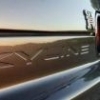Injector upgrade???
Announcements
-
Similar Content
-
Latest Posts
-
Pulled on a bit of loom under the glove box to try and cable tie it up a bit nice and heard a short somewhere behind the dash Pulled the climate control and dash out to investigate and remember I did in fact buy this car when i was younger and cannot blame the previous owner for everything Ended up finding this section of very brittle wire way up behind the centre air vents Tided up looms and removed redundant stuff (old radium harness, varex wiring, unknown crap) from past me and previous owners I found this random fuse box in my draw of electrical junk and have set it up to be a fused power with ignition source for whatever i need moving forwards While I was in the zone for wiring I also chased the reverse circuit and repaired that so the 32 has reverse lights finally though two candles may provide more light, it is still a win
-
let see how the rest of the fixes go...
-
That's the spirit! (maybe take it out of the car first)
-
I used 227 which isn't super stiff probably should have used 252. but i had an open tube of 227 already. also i'm sure it could be melted out with fire.
-
I forgot to come back to this. If the Sika is not stiff enough, and you can dig it back out (which should not be take for granted as being possible!), then I would try a 2 part polyurethane resin in a durometer a bit stiffer than whatever the Sika measures up at. It would suck having to buy a pot full of it to use just a thumbleful, but whatever.
-






Recommended Posts
Create an account or sign in to comment
You need to be a member in order to leave a comment
Create an account
Sign up for a new account in our community. It's easy!
Register a new accountSign in
Already have an account? Sign in here.
Sign In Now